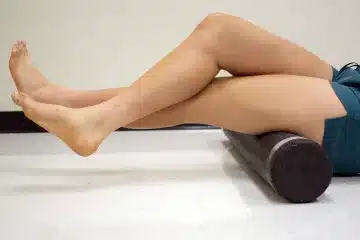HOW TO DESIGN A GARDEN BY YOURSELF WITH DO IT YOURSELF: 5 IDEAS TO TRY
Is it possible to design a beautiful garden totally independently? Absolutely yes: with a little do-it-yourself, gardening and creativity it is possible to better organize our green corner, regardless of size.
Taking inspiration from garden designers and their ideas, applying some tricks to make the space seem larger, exploiting all the surface at our disposal and focusing on the right style details to make the environment special, are all choices that will pay off, giving life in the garden of dreams.
To start our project we must first study the soil, understand its pH and then evaluate whether it should be cleaned, sieved or modified by adding different soil or topsoil. In this way it will be possible to evaluate what type of plants to grow.
Another fundamental aspect is to have a clear exposure and orientation, that is, the points of sun and shade according to the times of the day: this will also influence our planning choices and above all the position of the plants and the lawn.
The ideal is to draw a map of the garden and from there start with the hypotheses and evaluations, after which you can think about how to arrange it, whether to create corners with seats or covered, and how to cultivate the vegetation: it is important to choose it wisely, that is, targeting resistant plants and flowers, unless you have a greenhouse and a good green thumb.
The keywords to keep in mind are practicality, economy, harmony and hospitality: the garden must be easy to maintain, not require too many resources both in terms of time and money, be beautiful but above all relaxing and welcoming, where even guests can feel at home.
So if you have finished becoming the designer of your garden, here are 5 ideas and inspirations to try your hand at DIY.
WHAT WILL THE GARDEN BE USED FOR?
Understanding what our garden will be used for means being halfway there, because it will guide all our choices. It can be exclusively for representation, or the place in which to give life to our hobbies and passions, or even a quiet space in which to relax but also to receive.
To immediately give a special touch to the garden, a space dedicated to cooking and sharing: whether it is an aperitif corner, outdoor kitchen or barbecue, it immediately makes the open space more lived-in and liveable, extending the house to the outside as well. In this way, you will exploit the potential of the garden even more.
Do not forget about the lighting: if there are no places to hang temporary lights, you need to install street lights or floor lights (very scenic), but the important thing is that the dark corners are minimized.
RATIONALIZE THE SPACE
Making use of all the available space making it functional is also useful for not giving a feeling of confusion and disorganization. Although small, dividing the garden with do-it-yourself flower beds allows you to make everything more organic and harmonious, also helping those who spend time there to relax.
Delimiting it along the perimeter and separating the various areas (for example the one to receive from the one where to grow plants) will make the garden optically larger as well as super welcoming.
A COVERED CORNER: WHY NOT?
If there is the possibility, mounting a gazebo, a canopy (including awning) or a pergola is certainly an option to consider. The latter can also be created with reclaimed wooden planks and it is a classic to decorate it with climbing plants: which ones to choose depends on the climate and the orientation of the garden.
The gazebo is absolutely chic and has multiple furnishing and style possibilities: the real personal touch that the garden needs. It is perfect if you want to hope the dining / living area from the rest of the garden, perhaps assigning it to a quieter relaxation area.
THE PERFECT PLANTS:
In addition to the type of terrain and the orientation of the space, in order to choose the right plants, we must also consider the context in which we find ourselves, any landscape views and the structure of the territory. In fact, growing trees, shrubs or flowers native to distant areas and with very different climates could not only be very difficult, but also frustrate all our efforts and ruin the final effect.
The factors we must take into account are the rigidity of winter and summer heat, how much and how it rains during the year, the micro climate of the garden itself, which especially if positioned higher or lower than the surrounding area could be very different.
After checking which plants are right for us, the next question to ask is: what will they be used for? In fact, it is not enough to want them to be decorative, you also need to understand how and what other functions they can have, for example giving movement to a small space perhaps with different volumes (shrubs), coloring the garden (flowers or succulents), delimiting spaces and making them more welcoming. (ground plants), hiding areas or surfaces that are not aesthetically interesting (climbing).
WATER: FOUNTAINS AND POOLS
Water is an element to consider for your garden: a direct source is certainly of great help for plant management, but it can also be a precious decorative element. For Landscaping Services Click Here
A fountain immediately creates a special atmosphere, recalling the ancient gardens. Or you can be inspired by the Japanese tradition, where water is a much appreciated element of relaxation and meditation.
It is quite another matter if you have the possibility to create a swimming pool, large or small. The traditional ones can be very elegant, especially if they are of design, but the latest trends see natural pools as the best choice to combine aesthetics and practicality with Eco-sustainability.
They dig directly into the ground, which is waterproofed, then the filter systems are mounted, after which they are left as wild as possible, as if they were a pond. Very suggestive and impactful.




















[…] to school and getting a degree in design is a must for anyone serious about this kind of career. When researching school options, it should not be a program for […]